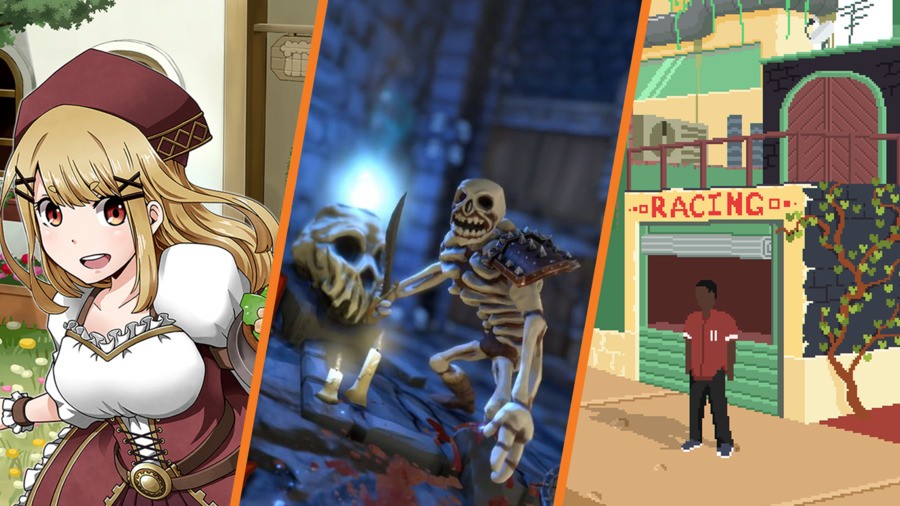
The indie scene has a strong output this week, with four thumbs ups and one maybe. We’ve got some great niche picks, like the bizarrely entertaining puzzler Please Don’t Touch Anything, pixelated arcade racing fun in Desert Child, a first-person, dungeon crawler RPG with Crimson Keep, sluggish steampunk puzzling with Steamburg and a classic, food infused, turn-based RPG in Marenian Tavern Story: Patty and the Hungry God.
Phew, that was a mouthful. On with the list…
Please, Don't Touch Anything
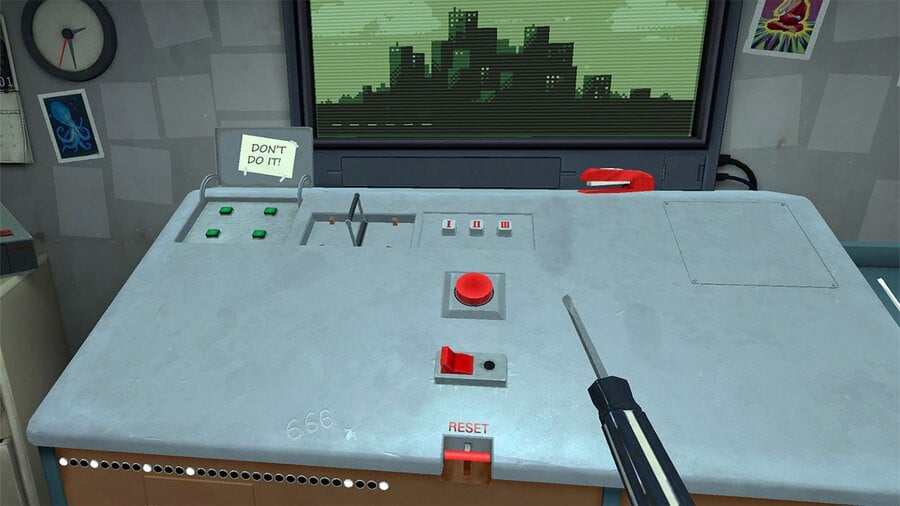
Cryptic is the name of the game in this appropriately-titled puzzler. As you’re thrust into an office with zero context and a plethora of things to touch, you’ll fiddle with switches, codes and one big red button. Using the information spread out across the room, as well as a bit of noggin power, you can get the equipment to do a multitude of cool things that lead to several differing endings. For example, simply doing as you’re told and sitting for a few minutes doing nothing earns you the peaceful ending.
The novelty, of course, comes from working out new and exciting variations of button combinations. If you’re a killjoy, you can always just look up a guide online and try them all out one after the other, but really, where is the fun in that? The magic puzzle-solving moment of euphoria feels all the better when your actions have hilariously dark outcomes. That said, this is literally all the game has to offer, so once you’ve finally figured out all of the different options, there won’t be much of an incentive to replay.
Presentation-wise, it’s tidy, though playing on the TV screen is recommended, as some of the text will make you squint when using the Switch's screen. The dimly-lit room has an unnerving atmosphere that makes the loud noises of the buttons even more impactful. Rendering only one simple room also means that the level of detail is exceptional. In summary, Please Don’t Touch Anything is a fun single player game to mess about with and discover all the endings, but be aware that it likely won’t provide much in the way of replay value.
Thumbs Up
Desert Child

Fast-paced and frantic, this hover cycle racer weaves in RPG elements alongside its core mechanics to deliver a super fun time. Balancing a quirky, offbeat sense of humour alongside a thinly-veiled plot which focuses on travelling between Earth and Mars, it delivers as much with its writing as it does on the race course. You get a great sense of the sense of the creator’s humour when your two options are ‘race’ or ‘chill,’ the latter of which simply shows your player relaxing on his vehicle with a cigarette. Funny stuff.
Amusing writing aside, the gameplay is here is solid, delivering frantic races with an 'easy to pick up, difficult to master' approach to its skill level. You’ll quickly get into the motions of racing, selling parts to the pawn shop, fixing your damaged ride and of course, eating copious bowls of ramen noodles to get your strength up. Doing this will progress you through the aforementioned witty story mode as well as increase your cash flow, allowing you to rinse-and-repeat to victory. The racing itself is brilliant, with fluid motions on a 2D plain that allows you to move up and down, giving it a somewhat three-dimensional effect. It works intuitively, particularly in two player mode – which is more of the same, but with human players. The boost function, in particular, feels powerful and satisfying. One of the most pleasing moments, particularly in multiplayer, comes from winning a race by a hair with a mighty boost over the finish line.
Overall, Desert Child provides high octane, arcade-style fun, with its quirky story and style providing a delicious cherry on top. The soundtrack is also great, with a unique, funky hip-hop sound that compliments its offbeat humour and presentation. Combine this with its retro visuals and stellar gameplay and you have a great addition to your indie collection, with a high replay value, particularly when playing with friends.
Thumbs Up
Crimson Keep
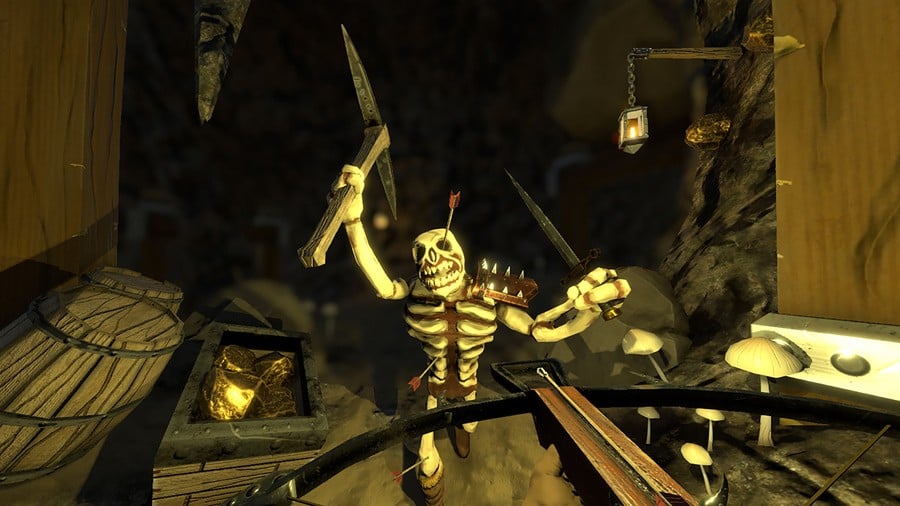
Crimson Keep is a dungeon crawler with an emphasis on progression and a visual style reminiscent of early era Elder Scrolls titles. Indeed, between the battle stance and the placement of the health bar, you might think you’re playing a low-res Skyrim mod. The gameplay is strong, if precise, though there are a few 'glitch gremlins' that rear their ugly heads to prevent this from being a truly stellar experience.
You’re given three options for classes and left to progress as far as you can, upgrading your gear and avoiding death to make it down to the titular Crimson Keep. You can choose between Brawler, Witch or Drifter, the latter of which serves as the game’s hard mode, starting you off with no weapons and a weaker character. Once you’re passed a quick tutorial (which you unfortunately have to sit through for every playthrough), you’re thrust down a hole into dungeon-crawling goodness. The combat requires exact collision detection to hit, but once you’re in the swing of things, it’s satisfying. As you kill enemies, you’ll level up and access unique power-ups and passive benefits, all of which will aid you in making it to the end. If you die, that’s it: you’re back to the start. You’ll also pick up a host of loot from the monsters you slay, which range from cartoonish and laughable, to pretty grim and gory.
While the retro visual style is great, the same can’t be said for the voiceover work, which is just awful. Many characters have voices that just don’t match their appearance and it’s the only aesthetic element that lets the game down. This, along with the odd textural glitch and overly long loading screen, make it sadly unpolished. Overall, however, Crimson Keep is good fun. Its gameplay is enjoyable, its graphics are fit for purpose and its replay value is high.
Thumbs Up
Steamburg
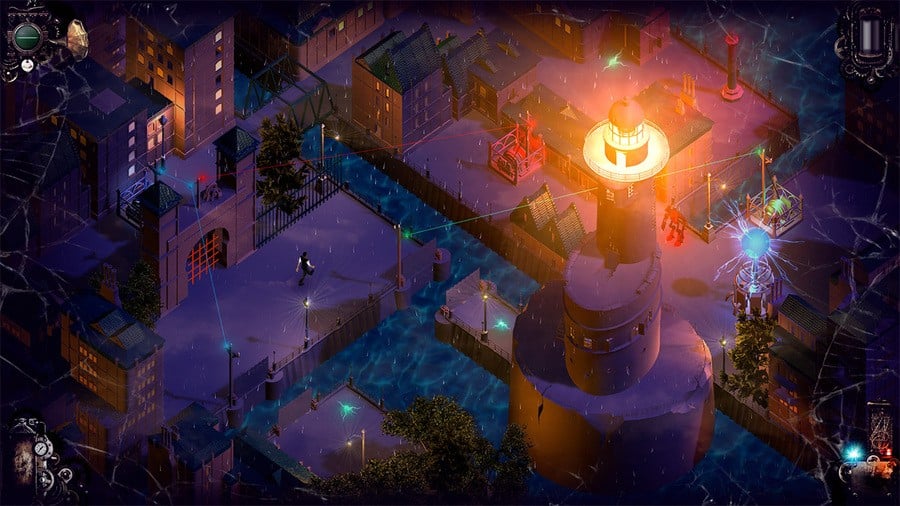
Steamburg is an adventure puzzler that is quite polarising. On the one hand, its visuals are gorgeous, with a steampunk vibe that is appropriately mechanical, dark and apocalyptic. However, its core gameplay, while not inherently bad, is clunkier than its robotic enemies. You play as Professor Vincent Moore, fighting a robotic invasion to save his fiancée from a presumably grim fate. As the blurb states, ‘Vincent is unarmed so he must be really smart.’ Thus, you’re left to use the environment to your advantage as you navigate each level, trying to collect three optional power orbs for further unlockable bonuses.
This works in principle, but the awkward controls that force you to move at a lethargic pace hurt the experience. The clunky control, unfortunately, isn’t just limited to the walk cycles too, as your throwing arm is about as user-friendly as a fairground claw attraction. That said, there isn’t anything inherently game-breaking here and every map is completely achievable. There is, however, a long-windedness that lacks the pick-up-and-play factor that makes a Switch port so appealing. If you’re in the for a night and can get into the rhythm of each level, you might still find some enjoyment here.
In review, the gorgeous steampunk style with surprisingly great voice acting doesn’t entirely make up for a slow, clumpy puzzler. The music is also great and the concept ambitious, but its mechanics and sluggish pace make it feel dated. Hardcore fans of adventure puzzlers or steampunk stories will likely enjoy it, but it won’t be to everyone’s tastes.
Maybe
Marenian Tavern Story: Patty and the Hungry God
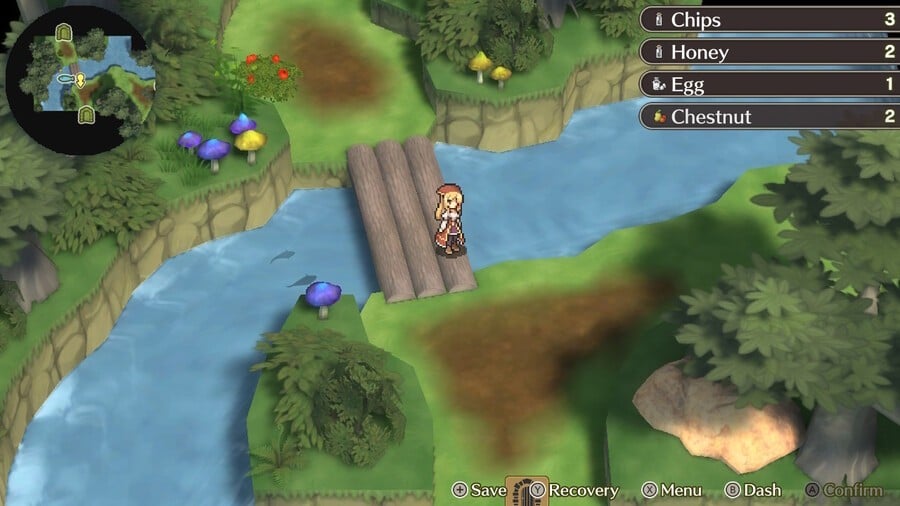
Finishing this week’s Nindie round-up is a traditional turn-based RPG that blends in elements of cooking games. Marenian Tavern Story is a quaint tale that follows the plight of Patty, who, along with her butler and little brother, becomes possessed by a curse of the God of Poverty. The God also happens to be a small, rabbit-like creature called Coco. Classic anime. It’s refreshing to see an RPG of this style not take itself seriously, with a low stake, character-centric plot, rather than the typical ‘fate of the universe’ malarkey.
The main gameplay mechanic comes from building up your tavern in order to level up, progress the story and earn more cash. You accomplish this by (what else?) cooking. You’ll prepare meals to serve customers, increasing the sales of the Inn whilst also satisfying the appetite of Coco and feeding your team to increase their skills and level up. The turn-based RPG elements come into play as you leave town to explore dungeons to collect the ingredients and supplies required. This can also be accomplished by purchasing what you need at the local store, which you may find preferable to the daily grind that comes from exploring dungeons, especially as you don’t gain XP from fighting enemies. This is the main criticism of the game; it becomes quite grind-heavy and repetitive once you get into the swing of things. The story does keep things fresh, but getting your tavern to the level it needs to be for completion takes a heck of a lot of time.
Presentation wise, Marenian Tavern Story takes character visual cues from SNES titles like Final Fantasy 3. The art style is obviously anime-infused, but the overworld characters contrast a little with some of the 3D environments sometimes, making them appear blurry. Overall, Marenian Tavern Story is an engaging RPG with hours upon hours of content within it. It is a solid offering with addictive gameplay that can get slightly tedious after a while. For an RPG fan looking for a new fix, however, you won’t go far wrong with this one.
Thumbs Up
A lovely selection of Nindie games for you this week - but will you be picking any of these up? Let us know with a comment below.





Comments 15
Desert Child is such a unique, amazing experience. I highly recommend it. (Caution: Some NSFW language in the video below.)
I’m all about Desert Child this week. The gorgeous pixel art alone is reason enough to pick it up – it’s some of the best I’ve seen in years!
I'll be checking out the game already recommended by the two gentlemen above me.
Had my eye on it for some time already!
I like the look of Desert Child but it seems a bit repetitive. NWR gave it a 3.5.
Desert child:
3.5 / 10 nintendoworldreport
9 / 10 bonusstage
@Pablo17 I saw that, but I’ve heard lots of good things elsewhere, so I’m undeterred. Besides, I trust Nintendo Life over NWR. Just! 😉
On Crimson Keep, do you keep anything for the next runthrough when you die to help you on the next run? Or is it a complete start-over as if you just opened the game the first time?
Desert Child looks like a really good game.
With Desert Child apparently it's all about if you like the base racing or not.
I want "Marenian Tavern Story: Patty and the Hungry God" to be a Physical release...make it Physical.
Meh. I'm already having an ultimate time with smash right now. No need for me to buy anything new for now! Plus, I'm already going to get a few new games tommorow for my birthday. I'm gonna pass this time.
I was hoping for a full review of Desert Child. Oh well.
So, Please Don't Touch Anything is basically like one of the old 3.5" ID4 Mission Disks... Nah, I'm good. I played all those, already
Happy birthday for tomorrow Brandon!
Desert Child looks so rad and although it doesn't have a full review I'm very glad it got the round up treatment. Adding it to the collection as I type. Was sold on it the moment it gave me the Cowboy Bebop feels off the trailer.
Tap here to load 15 comments
Leave A Comment
Hold on there, you need to login to post a comment...